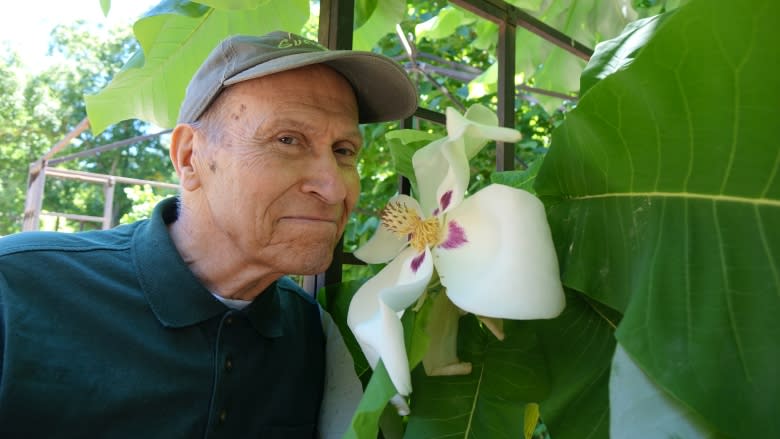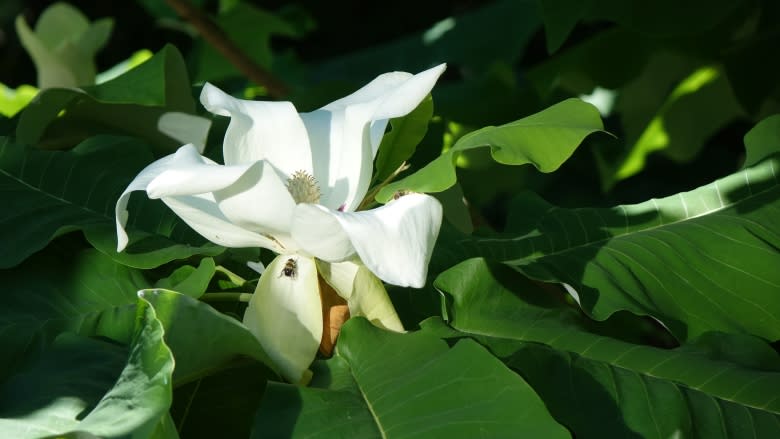Steel magnolia: Florida native thriving in Ottawa man's garden
It's 2,200 kilometres north of where it's supposed to grow, but a magnolia tree blooming in a suburban Ottawa backyard is anything but homesick.
The magnolia ashei grows, as a shrub or small tree, mainly in the wild in just a handful of counties in the Florida panhandle.
But Jim Marshall has been growing magnolias, almost entirely from seed, for five decades — so he decided to try an ashei seed he had purchased from the Magnolia Society.
He knew the climatic odds might be stacked against him when he planted the seed 16 years ago in his Ottawa backyard.
"So it's way north of its native range, but I thought it's worth a try — try new things, they sometimes surprise you," Marshall said.
Eight years later, it did just that when it bloomed. The flowers have nine white waxy petals, with a blush of purple in the centre and it grows 30 centimetres across at the widest point.
"It was very exciting. It's the novelty of growing it and I particularly like the fragrance of the flower. I'd rate this right up there with the best perfumes," said Marshall.
Ancient species
The tree, about 10 metres tall, resembles something found in tropical countries.
There's no definitive answer on why this one is managing to grow so far north, but Marshall has a theory that other arborists share.
"It's very possible the tree had a lot wider distribution before the last ice age," he said. "Magnolias are a very ancient species, about 65 million years old. And its relatives may well have been in this area at one time".
Marshall's large property is planted with more than four dozen species of Magnolia trees, so the ashei is shielded — which may also help explain its survival.
"It's fairly protected from the wind but there [is] only so much protection you can give them — when it's minus 40 C, it's minus 40 C."
Incredible case
Daniel Leonard teaches horticulture at the University of Florida Institute for Food and Agricultural Sciences in that state's panhandle region and said it was "awesome" to hear about Marshall's ashei.
"I [initially] thought, maybe he's misidentifying it or something," Leonard said. "The fact that they are growing and thriving there may cause researchers to rethink where the limits are for this plant. It's an incredible case. It really is."
Leonard said it's possible for the species to grow as far north as the southern shores of Lake Ontario, but that's still far away from the nation's capital.
Endangered plant
Leonard said the number of Magnolia ashei trees is now in the few thousands, and they have been added to Florida's endangered plant list — meaning they can't be dug up, nor can an area where they grow be developed.
"You guys are growing it in Canada, and that is great because it says something about the future of the ashei," he said.
But as the tree adapts to the northern climate and its soil conditions, Leonard said the gene structure would change and the tree could become a completely different sub-species from the native Florida variety.
Jim Marshall is humble about his efforts in testing the established wisdom about range of where the ashei will grow.
"I didn't do anything except plant the seed," he said.
His backyard is dotted with more than five dozen pots of various magnolia tree seedlings that he propagates to share with friends and those living nearby.
"Well to the neighbours in this area, I'm sort of the Johnny Appleseed of magnolias," said Marshall.


